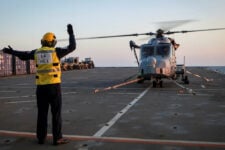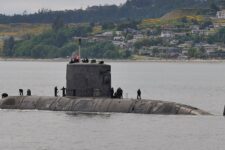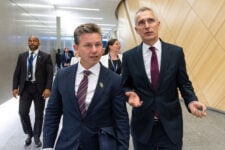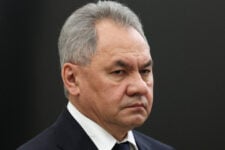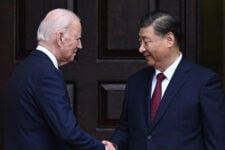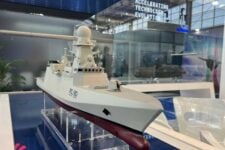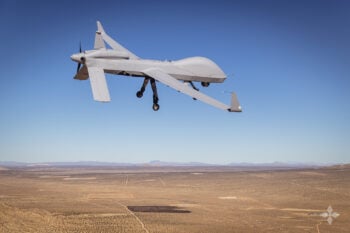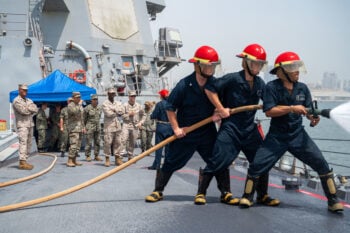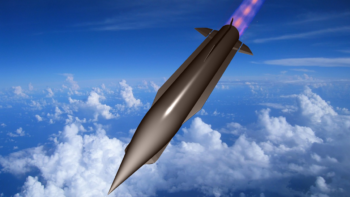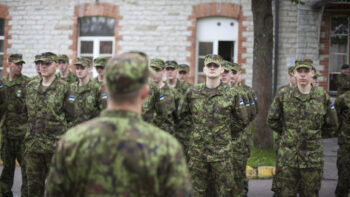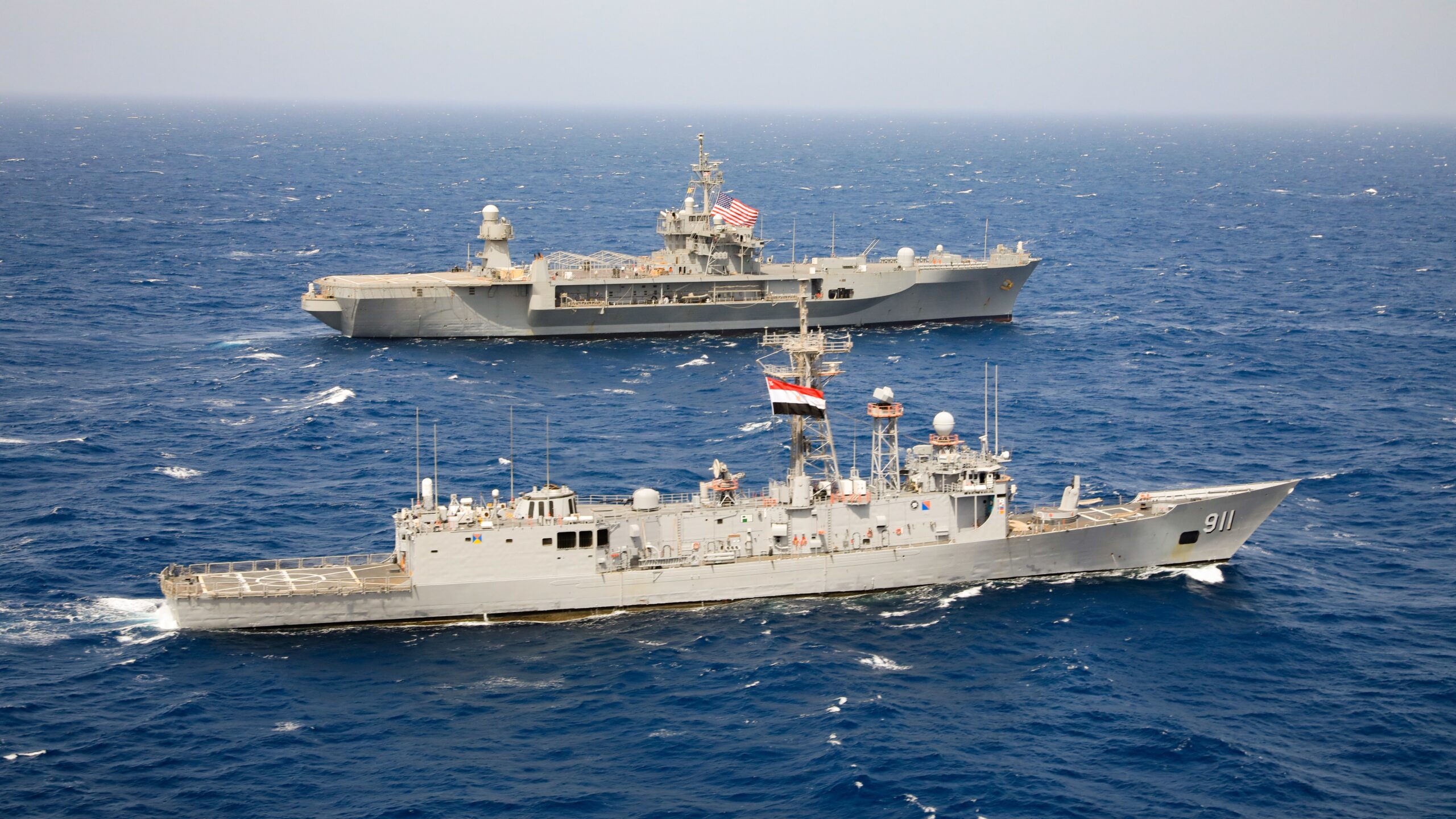
Egyptian Navy frigate ENS Alexandria (F911) and amphibious command ship USS Mount Whitney (LCC 20) operate in the Red Sea in support of the newly established Combined Task Force 153, April 20 2022.(U.S. Army photo/Cpl. DeAndre Dawkins)
Updated 4/28/22 8:30 am EST: The original headline and opening for this piece cited Cooper’s comments about arms trafficking as a key part of why the Task Force 153 was created. After publication a spokesperson for NAVCENT contacted Breaking Defense to clarify the formation of the task force was unrelated to arms trafficking seizures. This story has been updated to reflect that.
DUBAI: A spike in seizures of arms and drugs in an already volatile region underlines the benefits of multinational maritime operations and the value of creating a new naval multinational task force dedicated to the security of the Red Sea waters, the head of United States Naval Forces Central Command (NAVCENT) tells Breaking Defense.
“Last year, drug and weapons seizures skyrocketed,” Vice Adm. Brad Cooper, commander of US Fifth Fleet and NAVCENT, said in an April 24 interview.
“We successfully interdicted illegal drugs worth $500 million in street value, a higher figure than the previous four years combined. We also seized 9,000 weapons being smuggled along routes historically used to unlawfully supply the Houthis in Yemen. This was three times the amount of weapons interdicted in 2020,” Cooper said.
Most of the arms interdicted are believed to have originated from Iran, with their destination being the Houthi militias who are fighting an Arab coalition led by Saudi Arabia in Yemen.
NAVCENT’s area of operations “stretches along 5,000 miles of coastline through three strategic chokepoints from the Suez Canal, down the Red Sea, around the Gulf of Aden, into the Indian Ocean, up into the North Arabian Sea and Gulf of Oman, and into the Arabian Gulf. Given its strategic importance, the maritime environment in the Middle East warrants our continued attention, presence and vigilance,” added Cooper.
Some experts believe the timing of the formation of the new task force could be a means for the current US Administration to improve its strained political relations with some its regional allies.
“From America’s perspective preventing smuggled weapons to the Houthis is an important step that pleases regional allies — Saudi Arabia and the UAE — and would get domestic support here in Washington,” said Gawdat Bahghat, professor of national security at the National Defense University’s Near East South Asia Center for Strategic Studies. “The forming of the Task Force is a step to please the Saudis without getting too close” in a way that could upset Democratic members of Congress.
Bahghat added: “The ongoing negotiation with Iran over the nuclear program means that the two sides — US and Iran — are trying to increase their leverage, not only on the nuclear issue, but other bilateral and multilateral issues. The Task Force can be seen as increasing pressure on Tehran.”
The NAVCENT commander believes that the best strategy to handle this vast area is to get the local navies involved in task forces dedicated to policing sub-regions to double the effect.
“Naval forces operate best when we train, sail and lead together. Organizing multinational task forces enables us to do this more efficiently and effectively. We’ve seen great results from our task forces in other parts of the region,” said Cooper.
NAVCENT’s Combined Maritime Forces is made up of 34 nations, and already had three legacy task forces operating under it: Task Force 150 operates in Sea of Oman and the Indian Ocean, Task Force 151 was established in 2009 to focus on countering piracy and armed robbery at the Horn of Africa and the Indian Ocean, and Task Force 152 was established in 2004 to enhance regional maritime security cooperation and counter illicit activities by non-state actors in the Arabian Gulf Waters.
The newly announced Task Force 153, in contrast, will “help us work more closely with our partners to focus on the Red Sea, Bab al-Mandeb and Gulf of Aden. These waterways are critical to the free flow of commerce, and our continued presence provides security and stability,” said Cooper.
“Additionally, multinational task forces enable us to leverage the leadership of regional navies who regularly operate in these waters and have a deep knowledge of the environment. We are clearly more capable when we operate and lead together.”
Technology also has a role to play in the region, especially for a task force whose area of responsibility includes territory that has seen the use of unmanned boats rigged with explosive devices against commercial vessels. As a result, Cooper said NAVCENT is looking into ways to utilize advances in autonomous systems and unmanned vehicles’ technologies to bolster its capabilities and enhance multinational operations.
In February, NAVCENT organized the International Maritime Exercise, which featured what was described by the organizers as the largest global unmanned systems wargames.
“Integrating new unmanned systems with artificial intelligence puts more eyes out on the water that we simply have not had in the past. Seeing farther out enables us to build a better picture of what’s happening, spot threats more quickly and better position our crews to respond more rapidly,” said Cooper.
TAI exec claims 20 Turkish KAAN fighters to be delivered in 2028
Temel Kotil, TAI’s general manager, claimed that the domestically-produced Turkish jet will outperform the F-35 Joint Strike Fighter.

